15 Best Squat Programs (Tested by Time & Pros)
Author:
Reviewed by:
(21 years of Oly Lifting experience)
Unlock your full potential by engaging with our experts and community! Have questions about your fitness journey or looking for expert advice on weightlifting techniques? Don’t hesitate — leave a comment below and Sergii Putsov will provide a personalized answer and insights to help you reach your goals.
Torokhtiy is reader-supported. Some links are affiliate links, and we may earn a commission at no extra cost to you. See our disclosure page for details.
If you want to build serious leg strength and muscle, then your squat game needs to be on point. How do you do that? Well, you can wander the Internet and try to find something that may or may not work, or you can just take a look at our guide.
We’ll dive into some of the most effective squat routines and find you a good squat schedule. Each of the programs we’ll talk about has a unique history to it, as well as approach. They’re all designed to push your limits and even beyond that.
Your goal might be to just add plates to your max or you could be looking for a way to pack on some muscle; whatever the case, these programs can help you get there.
Ready? Let’s squat!
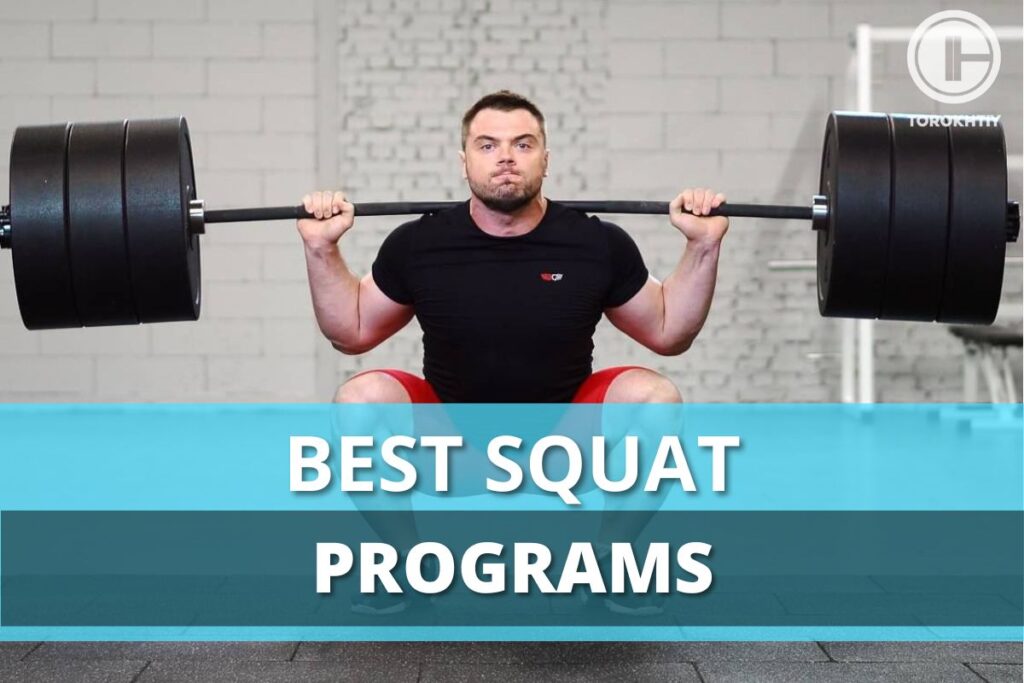
15 Best Squat Programs
After you’re done reading this, there’s no way you won’t have at least two or three squat routines that you’ll like.
There’s 15 of them and that’s a lot to get through, so let’s go!
1. Torokhtiy Squat Program
The Torokhtiy Squat Program is a well-rounded 12-week plan designed by our very own Oleksiy Torokhtiy, a renowned world champion with a remarkable back squat of 320 kg.
As a European Champion and Olympic lifter, Oleksiy Torokhtiy used his vast experience to develop this squat program. It’s a culmination of his years of training, competition, and coaching, and it gives you a structured approach to maximize your squat potential.
This squat program for strength spans 12 weeks and it’s designed to enhance both the back squat and front squat. It includes a combination of over 60 different movements, banded work, and weight training, along with accessory exercises that focus on core stability, joint health, and preventing injuries.
The program is designed to increase squat strength by incorporating 3 key principles: max strength training, submaximal reps for power, and pause training.
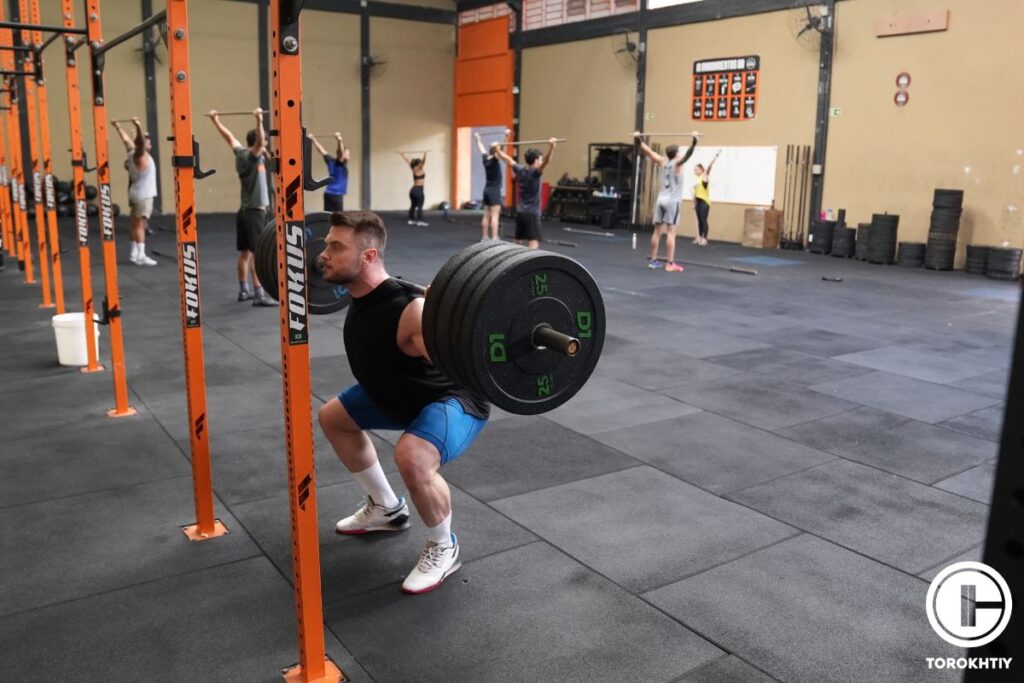
If you think this sounds a bit too advanced – it’s not. It can be a beginner squat program, as well as advanced. Whether you want to hit a new PB in the squat, strengthen your legs for other sports, or build a strong foundation for Olympic lifts, this program is made to deliver results.
It focuses on a strategic combination of sets, reps, and weights to progressively overload the muscles and stimulate growth. The training is intense and includes both heavy lifting for maximum strength and submaximal reps to develop power. Pause squats are included, too, to improve technique and isometric strength in most difficult positions to overcome strength plateaus.
The primary goal of this program is to significantly increase squat strength and build a foundation for overall athletic performance. By the time the 12 are up, you can expect to have increased your squat strength significantly (some of the users reported 60% improvement in a squat strength), achieved new PBs, and improved your balance, stability, and leg strength in general.
2. Hatch Squat Program
This is a well-known squat routine for strength that was designed by Olympic weightlifting coach Gayle Hatch. A lot of athletes use it, weightlifters in particular, because it does a great job at strengthening your legs and improving squat performance in general. It’s designed to develop both the front and back squat at the same time.
Gayle Hatch is a legendary figure in the world of weightlifting and strength training. He was the head coach of the 2004 U.S. Olympic weightlifting team and has coached a lot of national champions and Olympians.
The Hatch Squat Program was developed as part of his coaching methodology to produce strong, explosive athletes who would do excellent on Olympic lifting and other sports that need a lot of lower body strength.
It’s a 12-week training plan and you do it twice a week, with each session including both squat variations. The program is divided into percentages of the lifter’s 1RM for the back squat, which is used as the reference point for determining the weights to be used throughout the program.
The Hatch Squat Program is aimed at lifters of intermediate to advanced levels, and especially those that are Olympic lifters. However, it can also be tweaked for advanced athletes in other strength sports or those who already have a good foundation in squatting.
The volume and intensity are too much for beginners, so unless you already have some experience, there are other programs that will work better.
And speaking of intensity – it’s moderate to high intensity. Each workout involves doing multiple sets of both back and front squats, with the volume and intensity gradually increasing as the weeks go on.
The load is based on a percentage of the athlete’s 1RM, and it usually involves working in the range of 60% to 100% of the 1RM. The volume is moderate to high and each session will have you doing a lot of reps, which is why this program is so good at building strength.
3. Texas Method
The Texas Method is a squat workout plan developed by Olympic weightlifting coach Glenn Pendlay and it was popularized by Mark Rippetoe, who is a prominent figure in the strength training community. He’s the author of “Starting Strength”, a very well-known book, and Rippentoe’s teachings and writings made this method even more famous.
The program was designed to help athletes break through plateaus. It was created as a response to the needs of lifters who had outgrown linear progression models and who needed a more advanced, but still simple, training approach.
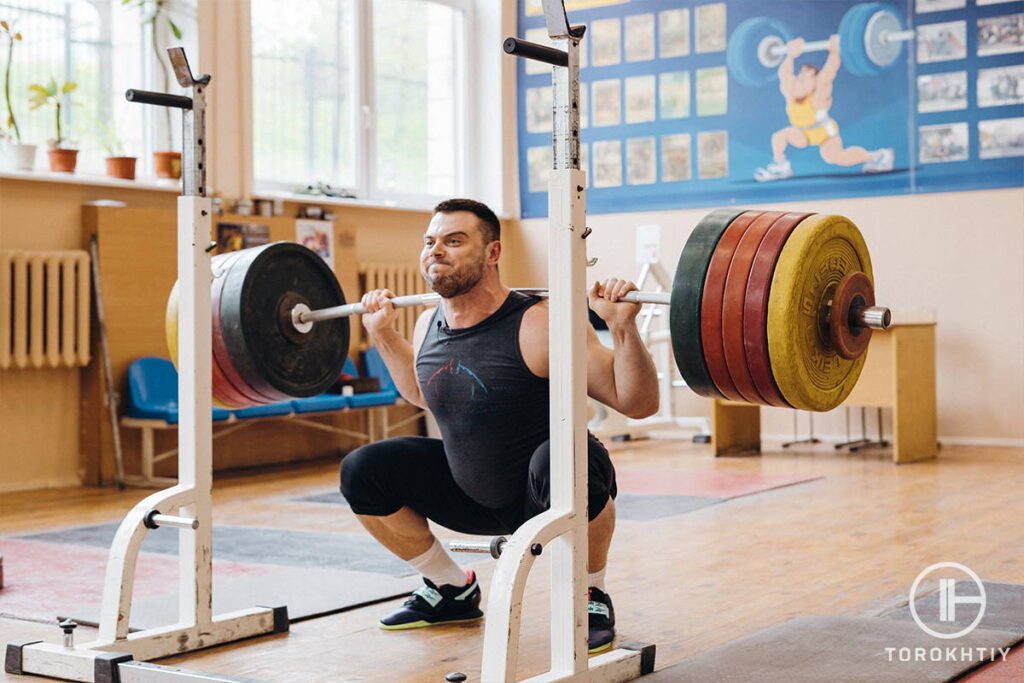
The Texas Method is structured around a three-day training week, usually organized into a “Volume Day,” a “Recovery day,” and an “Intensity day.” Every day has a specific focus that contributes to the overall goal of increasing strength.
- Volume Day: The first one is focused on high-volume work. Usually, you do 5 sets of 5 reps at a challenging but submaximal weight, usually around 90% of your 5-rep max. This day is designed to accumulate a lot of training stress, which drives adaptation and strength gains.
- Recovery Day: The second workout of the week is a lighter session that’s meant to promote recovery but while still keeping you active. It usually includes 2 sets of 5 reps at around 80% of the Volume Day’s load. It gives you the chance to work on technique and maintenance but it doesn’t add fatigue.
- Intensity Day: The third workout is all about hitting a new weekly max. This is usually a single set of 5 reps at a weight heavier that the previous week’s Intensity day. The goal is to reach a new 5RM and keep pushing the limits of strengths, with small weekly increases in the load.
It’s not for beginners, but it’s also not for those that are advanced; the Texas Method is made for lifters at the intermediate level. That would be those that are done with the linear progression and can no longer make gains from just increasing the weight every week.
It’s a step up in complexity and demand and its main goal is to increase overall strength, especially in the major compound lifts – the squat, bench press, deadlift, and overhead press.
4. Squat Nemesis
The Squat Nemesis was created by Nicholas Horton (often called Coach Nic9, who designed it as part of his broader philosophy of high-frequency training. Horton has a background in Olympic weightlifting and has coached many athletes at various levels.
This squat training program was developed out of Horton’s belief that frequent exposure to heavy squats could dramatically improve both strength and technique. It became popular because of its unconventional approach and its ability to give big results in a relatively short amount of time.
The program is built around the concept of daily squatting. It involves squatting 6 to 7 days a week and each session focuses on working up to a heavy single or a daily max.
I will quote N. Horton here because what he said is brilliant – “The point is doing so much TOTAL work that your body MUST respond… and do the RIGHT kind of work. That does NOT have to include wild-heavy maxes every day. In fact, the dirty little secret is that the best results we see are often among those who keep it a bit mellow on the 1RM’s, but kill it on the Intensifiers.”
The daily max doesn’t refer to an actual maximal lift, and instead, it’s the heaviest weight you can lift with good technique on that particular day.
I will allow myself to quote the Iron Samurai again because he hit the perfect spot! “We can often – through our rhetoric – make it seem as though going to failure means working to a true miss every day. But that isn’t exactly right. It’s more abstract: work as hard as you can as often as you can without ruining tomorrow’s workout.”
Unlike traditional programs that have specific sets and reps, Squat Nemesis is more flexible and adaptive and allows you to adjust the load based on how you feel each day.
Apart from the daily max, you also do back-off sets or extra volume work, depending on your energy levels and recovery. The program also includes different squat variations so that it can prevent overuse injuries and provide a well-rounded development.
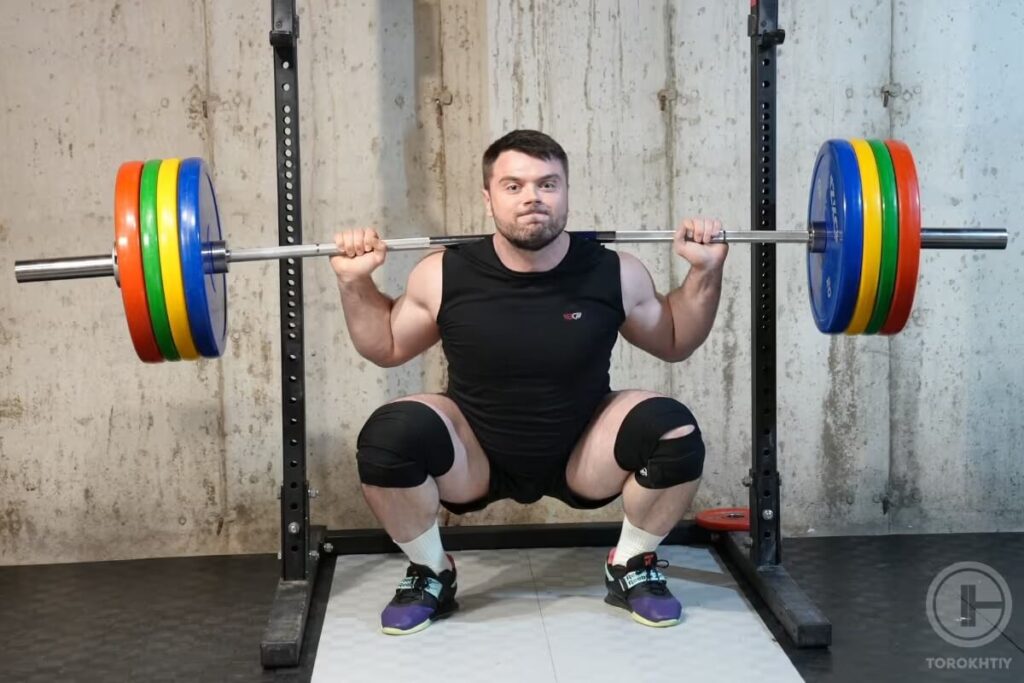
This program is ideal for advanced lifters who have a good foundation in squatting and who are comfortable with high-frequency training. It’s very demanding, so it won’t really work for people who are beginners or just new to heavy squatting.
If you want to give Squat Nemesis a try, you need to have experience with auto-regulation because the program needs you to listen to your body and adjust the intensity and volume accordingly.
Squat Nemesis’ main goal is to quickly increase squat strength and improve mental toughness and it doesn’t have an end date; it’s meant to be followed for as long as you want and it’s a continuous process of adaptation and improvement.
The program should be for folks who already know their body and how it responds to certain amounts of volume and intensities. The reason is because you need to be able to understand that you don’t train as hard as you can, but as hard as it takes to stimulate strength adaptation, and recover from – which is almost impossible for beginner weightlifters.
5. Madcow 5×5
The Madcow 5×5 program is an adaptation of Bill Starr’s original 5×5 strength training routine, which was first developed for football players to build strength in the squat, bench press, and power clean. Madcow adapted Bill Starr’s 5×5 workout by replacing the Olympic lifts with more accessible alternatives.
He swapped Power Cleans for Barbell Rows and replaced High Pulls with Deadlifts. These adjustments made the 5×5 workout more approachable for everyday lifters focused on building muscle and strength.
The “madcow” version of the program was created by an anonymous person who went by the online alias Madcow. This version was designed for intermediate lifters who needed more variation and complexity than what the original 5×5 program offered, but it still relies on its basic principles.
It will be too hard for beginners and advanced lifters will probably need more specialized programming than this.
This is a structured program that lasts for at least 12 weeks, with 3 training sessions per week – Monday, Wednesday, and Friday. It’s centered around 3 core lifts – the squat, bench press, and barbell row, with the deadlift and overhead press included in the rotation.
Each week, you do ramping sets on most major lifts. You increase the weight with each set until you reach your top set. On Friday, which is the heaviest day, you attempt your heaviest lift for 3 reps. This day also has the highest volume, with extra back-off sets to complete the workout.
The program alternates heavy, light, and medium days throughout the week, which allows for both progression and recovery.
The load is calculated based on your current maxes. You start with a lighter load to allow for proper form and gradual adaptation, and the intensity then builds throughout the program. Volume is moderate – 5 sets per exercise, but the increasing weight makes it more challenging as the program goes on.
The main goal of the program is to increase your strength in the major compound lifts and it’s designed to provide steady, sustainable progress over time, with a focus on building muscle mass and improving technique.
6. StrongLifts 5×5
Mehdi Hadim created StrongLifts 5×5 in the mid-2000s and he drew inspiration from the classic 5×5 programs used by strength coaches like Bill Starr and Reg Prsk.
Hadim wanted to make these programs simpler for a broader audience, especially beginners and those that are new to strength training. He launched the program online, provided free resources and a supportive community, and the program became really popular really fast. Today, StrongLifts 5×5 is one of the most well-known and widely used beginner strength programs in the world.
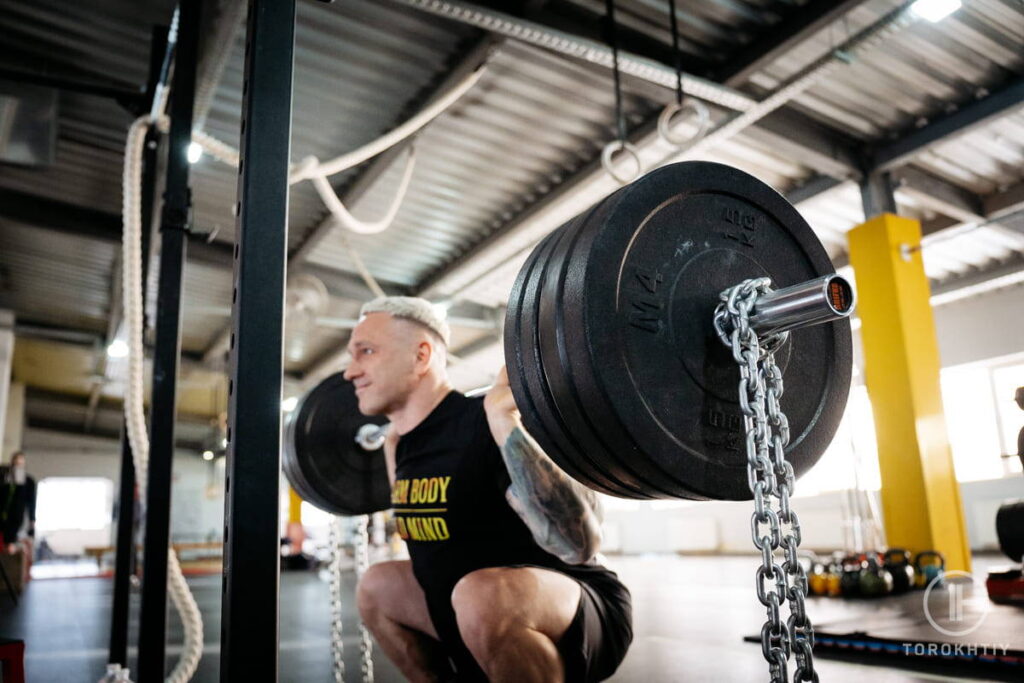
This is a 5×5 3-day-a-week program that revolves around 5 basic compound lifts: the squat, bench press, deadlift, overhead press, and barbell row. It’s designed to be simple and straightforward, and focuses on building strength in these fundamental movements.
This is how the program is structured:
- Workout A: Squat, bench press, barbell row
- Workout B: Squat, overhead press, deadlift
You alternate between A and B and do 3 workouts each week. Each exercise is done in 5 sets of 5 reps, except for the deadlift, which is done in 1 set of 5 reps. The program starts with light weights and allows you to focus on perfecting your form and building a strong foundation.
The load increases gradually each workout by 2.5 kg (5 lbs) for most exercises and 5 kg (10 lbs) for the deadlift. The focus is on consistent, linear progression, which allows beginners to see steady improvements over time.
The intensity is low to moderate at the start but goes up as the weights get heavier. The volume is manageable for beginners, and the 5 sets of 5 reps give a good balance between enough work to stimulate growth and recovery.
7. Torokhtiy Leg Strength Program
The Torokhtiy Leg Strength Program is a 5-week Olympic weightlifting training program designed by Oleksiy Torokhtiy, a highly respected weightlifting coach and former Olympic athlete. He has turned his focus to coaching and developing training programs that help athletes reach their full potential.
This training plan has 4 workouts per week and it will progressively build leg strength, with each week having a specific purpose. Here’s what you can expect from it:
- Week 1 – Introductory: This week is designed to prepare the body for the upcoming intense strength loads. It involves general prep and lighter exercises to prime the muscles and joints for the heavier work to come.
- Week 2 – Basic: The second week comes with a broader range of exercises that target your legs and back. The focus is on creating different types of stress on the muscles to build a strong foundation for the following weeks.
- Week 3 & 4 – Shocking: Weeks 3 and 4 are the most intense period of this program, with a significant volume of lifts done at 90-100% intensity. The focus is on squat variations and it will push you to handle max loads.
- Week 5 – Tapering: The last week is still very intense but there’s less volume of auxiliary exercises. This tapering phase allows your body to recover but still maintain the gains made in the squats.
The program is made for intermediate and advanced lifters who already have a good foundation in Olympic lifting. It’s too intense and too high in volume for beginners.
It uses a periodization approach and gradually increases the intensity while managing volume to maximize strength gains. Load varies depending on the phase and it’s adjusted throughout the program. The main goal of this program is to help you get to new PBs in the back and front squat.
8. Bulgarian Squat Method
Ivan Abadjiev, who is often called the “Father of Bulgarian Weightlifting,” developed the Bulgarian Squat Method as part of his broader approach to training elite lifters. His methods were revolutionary at the time and they focused on minimal variation in exercises, extremely high frequency, and training at near to max loads almost every day.
As you can imagine, people were skeptical about it until they saw how successful Bulgarian weightlifters were, especially in the Olympics.
The Bulgarian Squat Method will have you squatting every day, sometimes multiple times a day, at or near maximal intensity. The core of the program is built around the back squat, but it can also include variations like the front squat.
The training sessions usually focus on working up to a daily max, where you do a single rep at the heaviest weights you can manage for that day. The daily max is not necessarily a PR but the heaviest lift you can achieve with good form on that particular day.
Since this method exposes you to heavy weights so much, the volume per session is relatively low. It may just be a few heavy singles or doubles, followed by lighter back-off sets if that’s necessary. The overall goal is to condition your body and nervous system to handle heavy loads on a regular basis, which leads to strength adaptations over time.
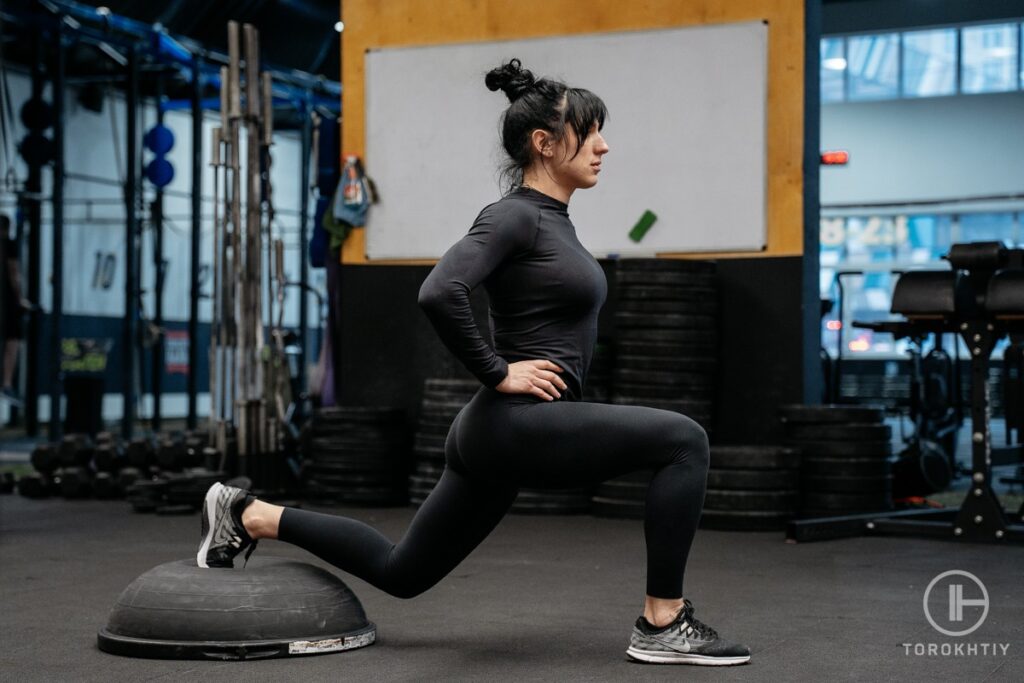
This method is meant for advanced lifters who have a lot of experience in squatting and high-frequency training. You need to know your limits, your technique has to be impeccable, and you have to be able to recover quickly between sessions – which only those that are advanced can do.
One thing you need to know about this method is that it was used to select the best lifters at a particular time – genetic freaks, who will withstand this extraordinary intensity and frequency. Many of the advanced athletes in the Bulgarian team back then even though they were on PED’s at that time, still did not handle it and got injured.
9. 5/3/1 Method
Jim Wendler developed the 5/3/1 Method after his powerlifting career, in which he managed to achieve some truly impressive lifts, like the 1000-pound squat. Wendler wanted to create a program that wan’s just effective at building strength, but that will also work for people with busy lives outside the gym.
The 5/3/1 method was first introduced in Wendler’s 2009 book, “5/3/1: The Simplest and Most Effective Training System for Raw Strength,” and it quickly became popular because of its straightforward approach and proven results.
This powerlifting squat program is structured around 4 main lifts: the squat, deadlift, bench press, and overhead press. It operates on a monthly cycle and each week focuses on different rep ranges and percentages of your 1RM.
Here’s what a 4-week squat cycle looks like:
- Week 1: 3 sets of 5 reps (5/5/5+) at 65%, 75%, and 85% of 1RM
- Week 2: 3 sets of 3 reps (3/3/3+) at 70%, 80%, and 90% of 1RM
- Week 3: 1 set of 5 reps, 1 set of 3 reps, and 1 set of 1 rep (5/3/1+) at 75%, 85%, and 95% of 1RM
- Week 4: A deload week with lighter weights, typically 40-60% of 1RM for 3 sets of 5 reps
One of the most important features of this method is the “plus” set in each week’s final working set. This set is done with as many reps as possible, which allows you to push yourself and test your progress without maxing out too often.
The 5/3/1 will work for a lot of lifters, from intermediate to advanced. It’s especially good for those that already have experience with strength training and are looking for a program that offers consistent, long-term progress. Beginners can also use it, but not unless they have a basic understanding of the major lifts and their own 1RM before they start.
Systematic approach plus build in deload week is what makes this program great.
10. Juggernaut Method
Chad Wesley Smith created the Juggernaut Method based on his extensive experience as a competitive weightlifter and strength coach. Smith has competed at a high level and he has also trained a lot of athletes. He wanted to develop a program that combined the best elements of successful training systems while also having a clear progression model.
The Juggernaut Method was first introduced in 2010 in Smith’s book “The Juggernaut Method: Strength, Power, and Speed for Every Athlete.”
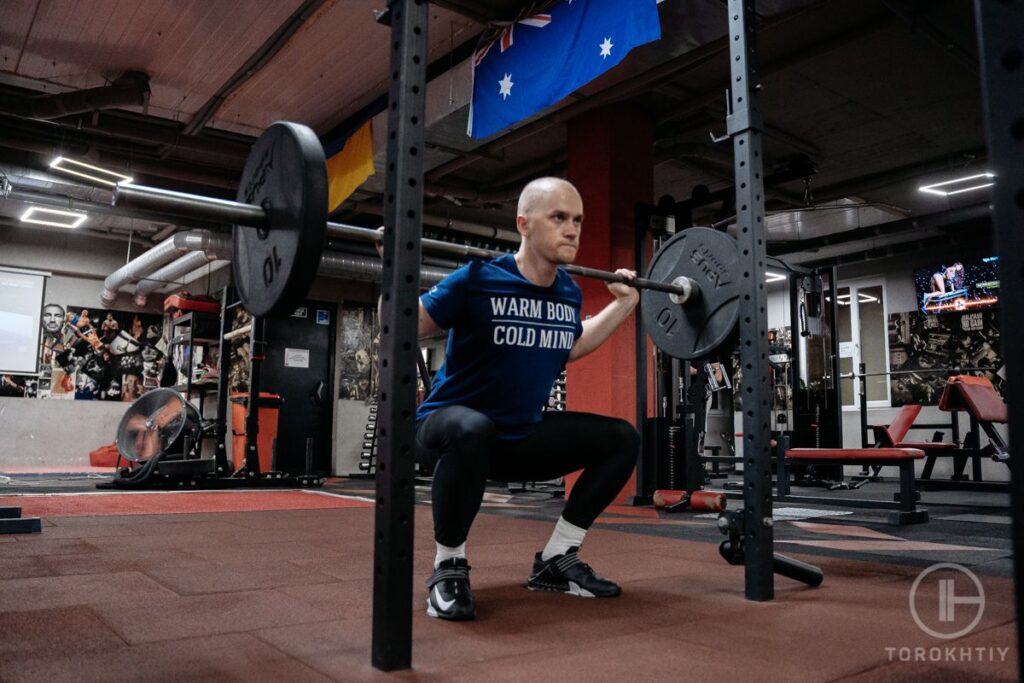
This powerlifting program is structured around 4 main lifts – the squat, bench press, deadlift, and overhead press. The program is divided into 4 phases and each of them lasts for 3 weeks. After the 3 weeks are up, they’re followed by a 1-week deload. Each phase is designed to build different aspects of strength and hypertrophy:
- 10s Phase (Hypertrophy): Focuses on building muscle mass, work capacity and technique
- 8s Phase (Strength-Endurance): Increase intensity to bridge the gap between hypertrophy and strength
- 5s Phase (Strength): Focuses on building maximal strength
- 3s phase (Peaking): Prepares you for max strength expression (usually leading into competition)
Each of these phases progresses over 3 weeks of increasing intensity. Within each phase, you do multiple sets and reps, with the final set of the last 3rd week being an “AMRAP” (as many reps as possible) set.
This method will work best for lifters who are intermediate and advanced, and who have a good foundation in strength training but are looking for a program with a clear progression model.
Beginners can use it, too, but should try to find and read about the Juggernaut Inverted method for 10s and 8s. . The program’s structure needs you to understand the basics and you’ll also need to know the proper lifting techniques.
The load is based on percentages of your training max, which is usually set at 90% of your actual max so your progression is sustainable. Intensity ups throughout each phase and the most intense work occurs in the final weeks of the 5s and 3s phases.
11. Westside Barbell Conjugate Method
This is arguably the superior method for strength development in lifting however not many people know how to use Conjugate correctly. Lifters like Matt Wenning or Mark Bell and many other world champions build almost inhuman strength with Conjugate.
The mastermind behind the Westside Barbell Conjugate Method is Louie Simmons, a world-class powerlifter. He created this method in the 1980s after studying the training practices of top Soviet and Bulgarian weightlifters. He adapted these methods to fit the needs of powerlifters, which lead to the Conjugate Method being developed.
The method is built around 4 primary training sessions a week and they’re divided into 2 upper-body and 2 lower-body days. The method has a system of rotating exercises and varied intensities, which prevents plateaus and makes continuous strength gains possible. Here’s how a week usually looks:
- Max Effort Days: These focus on developing absolute strength. 1 upper-body and 1 lower-body day are dedicated to lifting maximal weights (1-3 rep maxes) in a specific loft or a variation of that lift. The exercise selection is rotated on a regular basis, usually every 1-3 weeks.
- Dynamic Effort Days: These are all about training specific strengths like speed strength or strength speed.. The other two days of the week are dedicated to dynamic work, where you do multiple sets (often 8-12) of 1-3 reps at a submaximal load (50-70% of 1RM) with maximum speed. The goal is to increase the rate of force development and improve power. Bar speed plays a crucial role in dynamic effort.
Athletes often use accommodated resistance like bands and chains, and pay attention to GPP which is often done with sled.
Apart from these sessions, this method also includes accessory exercises that are supposed to address individual weaknesses, handle muscle imbalances, and improve overall athleticism.
The main focus is identifying a limiting factor – weakness – in your lift and addressing it to allow you improve strength
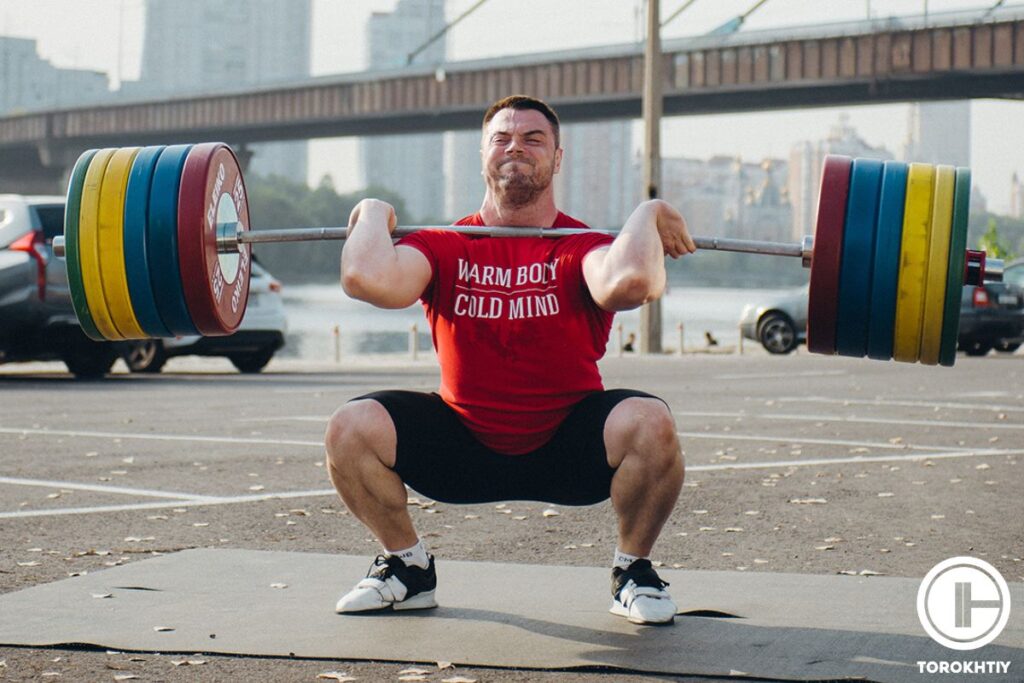
It’s best suited for advanced lifters, especially those in powerlifting or strength sports, because it relies on a deep understanding of lifting techniques, being able to adjust the loads and exercises, and the ability to recover from super intense sessions week by week – none of which beginners are prepared for (yet).
The main goal of this program is to develop maximal strength, power, and explosiveness in the main powerlifting lifts: squat, bench press, and deadlift.
12. Candito Squat Program
The Candito Squat Program was developed by Jonnie Candito, who is a competitive powerlifter with impressive credentials, including several championship titles. He’s also a YouTuber and a coach, and he provides free strength training programs and educational tips.
This program is based on his experience as a powerlifter and his understanding of what it takes to develop squat strength elite athletes have.
Technically, a beginner could use this program, but it will work better for people who have already mastered the squat technique and they’ve built up their initial strength levels, which would be intermediate and advanced lifters.
The Candito Squat Program is a 9-week cycle that’s focused on improving the squat. The program incorporates different phases so your progress can be steady, and it targets specific aspects of strength development. It combines volume, intensity, and frequency in a strategic way to help you consistently improve your squat over the entire cycle.
This is how it’s divided:
- Weeks 1-3 – High Frequency Phase: In this phase, the program focuses on high-frequency squatting with moderate to heavy loads. Squats are done multiple times a week to build “muscular conditioning”, technique, volume tolerance, and foundational strength.
- Weeks 4-5 – High Volume Reduced Frequency Phase: This phase increases the volume, usually with more reps per set, and it reduces the frequency of the sessions. The goal is to build hypertrophy and strength and prepare for heavier loads in the following weeks.
- Week 6 – 5-Rep Max Transition : In week 6, the program transitions into working with heavier weights for lower reps and focuses on finding and pushing the 5-rep max.
- Week 7-8 – Max Strength Phase: The focus shifts to heavier weights with fewer reps, designed to increase max strength.
- Week 9 – Max Out Week: The last week is the peak and you aim for a 1-rep max attempt.
13. “5 More!” Tom Platz
This routine is a legendary approach to leg training and it was inspired by Tom Platz, one of the most iconic bodybuilders. Platz was often called “The Quadfather” and he was famous for intense, relentless training style. And for just the sheer size and definition of his legs, of course. His legs were so impressive that he became a benchmark in bodybuilding.
The phrase “5 More!” became a synonym for his training style because he was known for always pushing out extra reps, even when his muscles were burning.
This isn’t really a formalized program with set numbers. Instead, it’s an approach to training that focuses on extreme intensity and high volume. Platz would usually do a combo of heavy squats with moderate to high reps, often in the range of 15-20 reps per set.
But what set his training apart was that he was willing to go beyond what seemed possible by adding extra reps all the time, pushing through the pain and extending sets beyond the limits of what most people consider to be the norm.
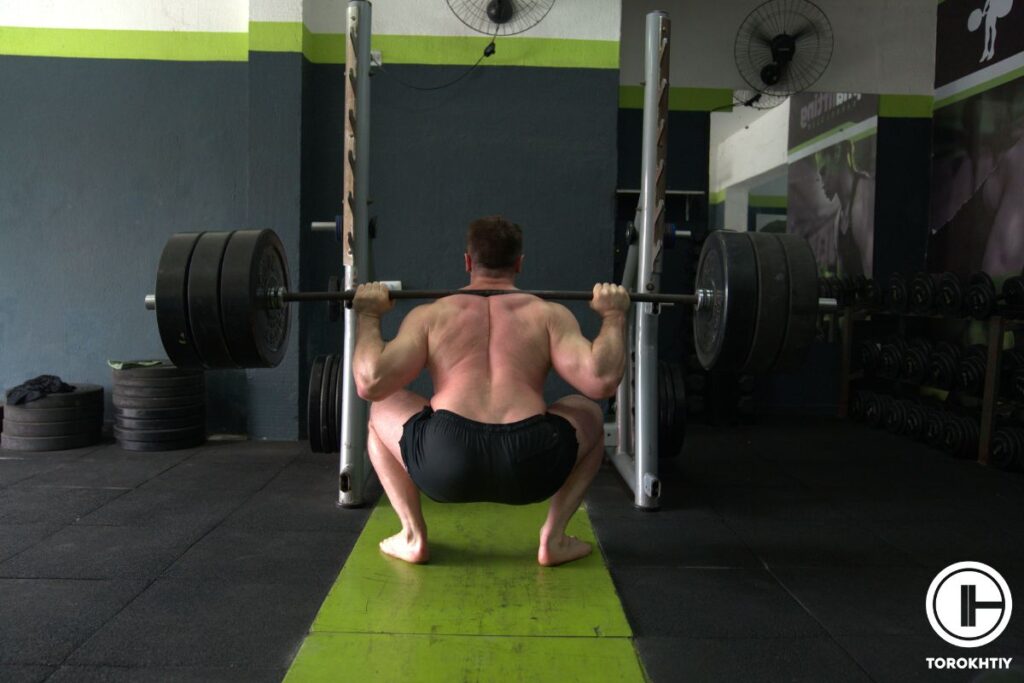
Here’s how a typical Tom Platz leg workout might look like:
- Back Squats: 5-7 sets of 15-20 reps, usually pushing the last set to failure and then attempting “5 more!” reps beyond failure after few seconds break
- Hack squats, Curls and Extensions: Similarly high-rep sets, pushing past failure
Platz was also known for incorporating drop sets, forced reps, and other techniques to boost intensity to maximize muscle fiber recruitment and growth.
If you couldn’t already tell, this isn’t a beginner-friendly method. It’s not the best even for those at an intermediate level. This is something advanced lifters could benefit from, and if you’re not one and still try to give this method a go, you risk overtraining and injuries.
Apart from having a deep understanding of your body and a good foundation of strength, this approach needs a lot of mental toughness and you need to be willing to go through a lot of discomfort during workouts.
Just keep in mind that this kind of method can result in significant muscle growth because of that muscle failure, it can also lead to overtraining. In terms of strength you will get stronger because you will get bigger but there are superior methods available for strength development.
14. 20-Rep Squat Program
This back squat program goes all the way back to the early 20th century, although it became popular in the 1960s and 1970s. Strength coach and author John McCallum wrote about it in his “Keys to Progress” series, and then it was mentioned in the Ironman Magazine.
The program lasts for just 6 weeks, so each training session needs your maximum effort. To determine your starting weight, first find your 5-rep max (5RM). Then, subtract 5 pounds for every training day in the program. For instance, if your 5RM is 300 pounds and you plan to train 3 times a week for 6 weeks, your starting weight would be 210 pounds (3×6=18, 18×5=90, 300-90=210) . The goal is to close the 90-pound gap over 6 weeks, and ultimately work your way up to squatting 300 pounds for 20 reps by the end of the program.
This 20-rep set is usually done once per workout and you are supposed to use rest-pause techniques (taking a few deep breaths between reps) to push through the pain and complete all 20 reps.
Apart from the 20-rep squat, the program also involves a few complimentary exercises, like:
- Pullovers
- Bench press
- Bent over rows
- Deadlifts
You need to have experience with squats and you need to understand your limits, which makes this program good for intermediate and advanced lifters. It’s both physically and mentally demanding and if you’re going to do it, you’ll need a lot (!) of determination to push through the discomfort. This would all be too overwhelming for beginners.
The volume is relatively low because the program centers around 1 all-out set of squats, but the intensity is insane. The total workout time is brief and you’re supposed to do it 3 times a week for 6 weeks, which is a good amount of time to see results.
15. Torokhtiy Squat Mobility
The Torokhtiy Squat Mobility program is a 6-week training regimen that’s designed to improve lower body mobility, flexibility, and overall squat performance.
It was created by Oleksiy Torohktiy, an experienced coach with over 21 years of experience in Olympic weightlifting, and Zinaida Bondarenko, also a coach, and skilled physiotherapist with more than a decade of experience in working with elite athletes.
The program is meant to improve athletes’ technique and performance in Olympic lifts like the snatch, clean, squat jerk, and squats.
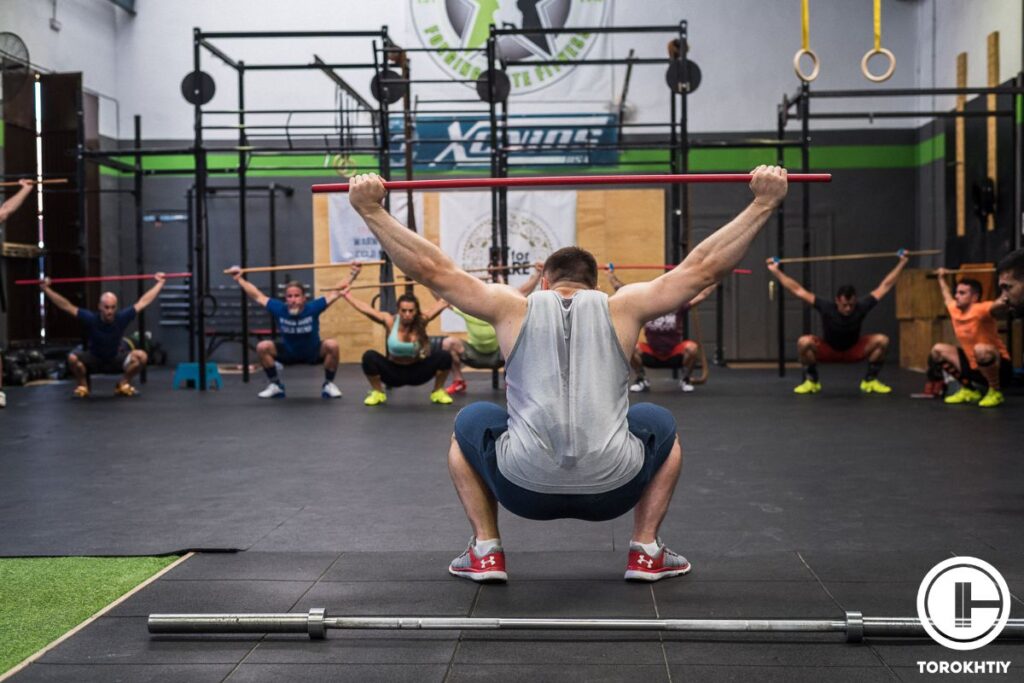
There are 3 sessions per week and each session is designed to progressively improve your lower body mobility. The exercises target key areas that influence squat depth, stability, and technique in general. The program includes 60 unique exercises and each is supported by detailed video graphics to guide you through the movements.
The exercises focus on improving flexibility, joint stability, and functional range of motion. When you improve your flexibility and joint stability, you get more confidence for those intense workouts, plus there’s less risk of injury. This program will also strengthen your foundation in the deep squat.
Unlike most other programs on this list, this one will work for people of all skill levels. The guidance in the videos is detailed and it makes sure that even those that are new to mobility training can get the hang of it and do the exercises correctly.
The program isn’t so much about traditional strength training, so the load is minimal and consists mainly of bodyweight exercises or light resistance to help with stretching and joint mobilization. Intensity is moderate because the goal here is to improve mobility without causing strain or fatigue.
Volume is carefully managed and the 3 sessions (each lasting between 45 to 60 minutes) a week allow for consistent improvements without overwhelming your recovery capacity. You can easily combine it with any of the programs above.
Squat Programming for Beginners vs Intermediate and Advanced Lifters
How can you determine whether you are a beginner, intermediate, or advanced lifter? That is a good topic. The solution may alter the exercises you include in your routine, the training plan you select, and the rate at which you should put on weight when bulking or add load to the barbell.
The first and rather poor approach relies on how long one has been weightlifting. The categorization looks as follows:
- Someone who has only recently begun lifting is considered a beginner.
- A person who has been lifting for 6-24 months is considered an intermediate lifter.
- One who has been training for more than 2 years is considered an advanced lifter.
These figures may now change. Sometimes only those who have been training over ten years are given the advanced title. Nevertheless, it remains a poor approach to categorize one’s lifting ability. How muscular or powerful you are might also affect your classification.
A more accurate method is to use strength-to-bodyweight ratios:
- A beginner can squat up to their bodyweight (0-1.0 times their bodyweight)
- An intermediate lifter can squat 1.0-1.7 times their bodyweight
- An advanced lifter can squat 1.7 times or more of their bodyweight
What you need to understand from here is that you need to first build general strength before you will jump into specific strengths and some more advanced programs. There is no point of using accommodating resistance if you can’t squat/deadlift at least 1.7x of your bodyweight (unless there is a very specific reason). Remember, always general before specific.
1. Programming for Beginners
Beginners are advised to perform around 4 sets x 6 reps of squats without any specifically recommended weight; instead, they should choose a load that they can manage with proper form.
Often, the best choice is to follow a simple 5×5 program, which involves doing 5 sets of 5 reps of squats. In the beginning stick with using basic linear progression, where you start with manageable weight and gradually increase the load (or reps or sets) each session as your strength and form improve.
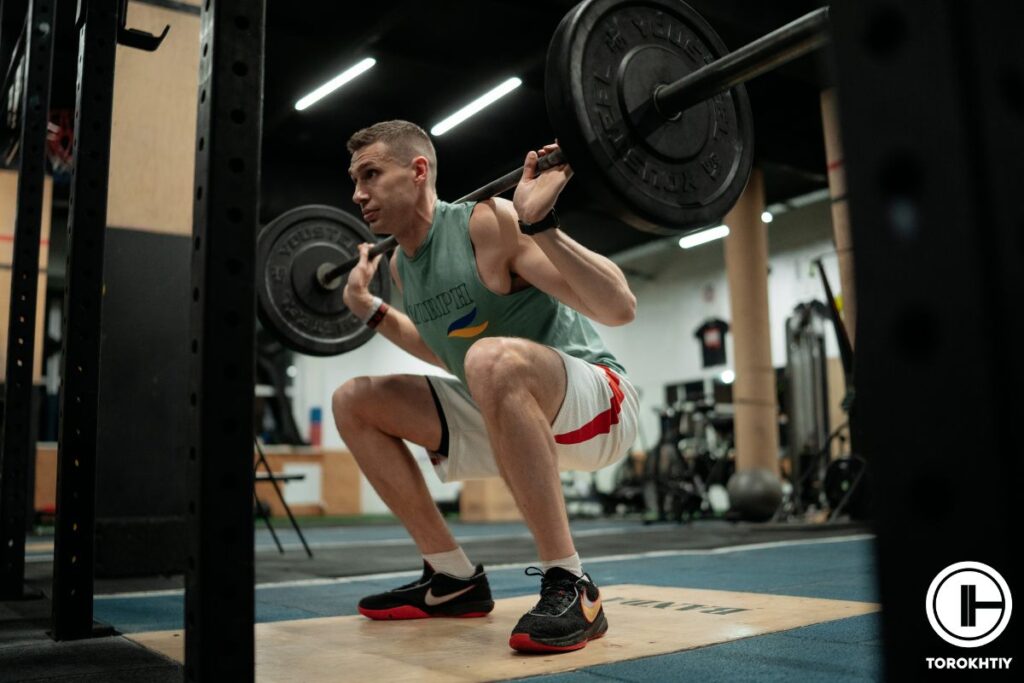
At this phase of training, the goal is technical mastery rather than weight gain. Up until they are proficient in the squat, bench press, deadlift, and overhead press & squat, a person is regarded as a beginner. Mostly, athletes have a squat schedule 3 times per week.
For beginners, it’s good to follow a full-body workout routine 3 times a week (push,pull, legs in one session), which will help them build good general strength and improve their technique. General idea is that beginners need to focus more on main lifts, and simply squat more, while advanced athletes later shift the focus more to accessory work.
2. Programming for Intermediate
Intermediate lifters are defined more by their strength level rather than by their specific training style. For example, two lifters might follow the same 5×5 program, but one could be a beginner and the other one more advanced, depending on their strength. As previously mentioned, we can estimate that an intermediate lifter can squat 1.0-1.7 times their bodyweight with sound technique.
At this level, the focus shifts from technical mastery and general strength to maybe more advanced programs than those with linear periodization, if for some reason they plateaued.
Training frequency usually increases to 3-4 sessions a week, and total volume should be increased through accessory exercises.
3. Programming for Advanced
At the advanced stage, athletes are lifting heavier weights, but the focus is on precision rather than jus simply training “harder”. There’s much less room for error at this level because progress is much slower – advanced lifters might only see small improvements over years, compared to the rapid progress of beginners and intermediates.
Therefore, the intensity needs to be carefully controlled, fatigue management is crucial, and recovery becomes even more important. If there happens to be an injury, it can set the athlete back a lot.
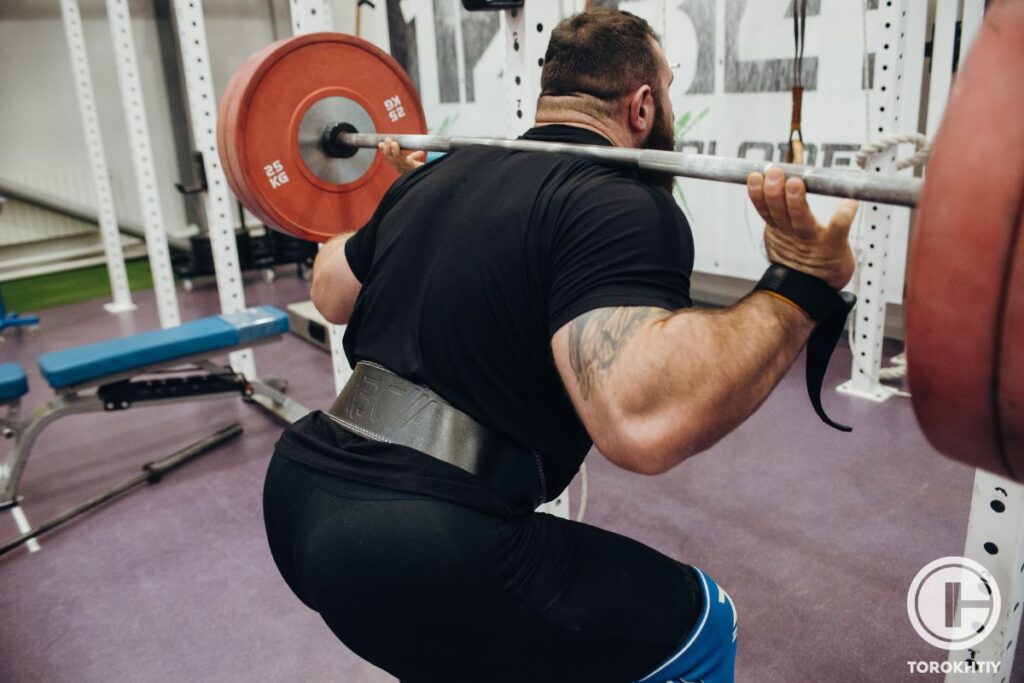
Since we are preparing for a peaking block and because you need more time to peak your lifts at an advanced level, training is much heavier than it was for the intermediate for the major movement. Advanced lifters often use sophisticated methods like conjugate or Juggernaut training systems to make sure they continue to progress.
Recovery usually allows for about 72 hours of rest after a max effort session before training the same muscle group again. This accessory load is used to strengthen an athlete’s particular area of weakness.
At this stage, training focuses heavily on addressing weak points because there’s little room for general improvement. Advanced lifters often follow an upper-lower split and focus on specific weaknesses to improve performance.
Proper technique and joint care becomes even more important because there is higher risk of injuries.
3 Key Factors in Squat Routine
1. Frequency
Most athletes squat a few times each week. By doing this, you will have more chances to enhance your squat technique and prepare various training adaptations, such as strength, hypertrophy, and power, for each exercise.
It’s important to structure your sessions with heavy, medium, and light days – or a balance of development, maintenance, and recovery days. The key is effective fatigue management and total volume control. If your daily training volume is low enough, your frequency can be higher without compromising recovery.
2. Intensity
Exercise intensity is how hard the exercise feels; is it real easy or very challenging? How much energy do you need to complete it? Various people may experience different levels of effort when engaging in the same exercise. The range of intensity training can range from 50 up to 90% of 1 RM, depending on the training target (strength, hypertrophy, or power).
Higher intensities (closer to 100%) are used for those focused on strength and they often approach failure or near failure. For hypertrophy, moderate intensities (around 50-80%) with sets close to failure are common, while power training usually uses lower to moderate intensities (30-80%) with a focus on speed and explosiveness.
3. Repetition Range
The ideal rep range for squats, if the hypertrophy is the aim, is 6 to 25, as long as the sets are done close to failure. Hypertrophy is less dependent on a specific rep range and more on total volume and intensity. As long as you’re approaching failure, whether you’re doing 6 or 25 reps, you can get your muscles to grow.
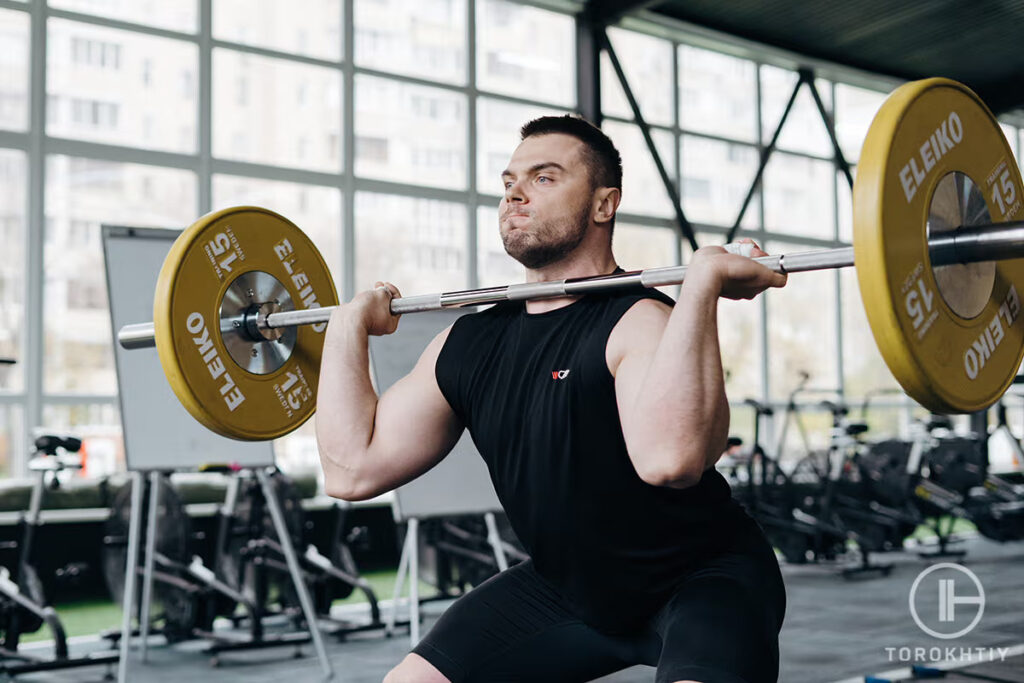
The ideal rep range for squats is 1-5 repetitions if building leg power and strength is the aim. To adjust for overall volume, we need to additionally take sets and reps into account. Although this rep range is not written in stone, it is typically advised since it enables one to lift weights that are difficult enough to generate significant quantities of force.
One useful guideline is Prilepin’s chart, which outlines the optimal number of sets and reps based on the percentage of your 1RM. This chart helps make sure you’re lifting within the right range to improve strength while managing fatigue.
Follow us!

Free!
Get a 2-week Weightlifting Program as a bonus for the subscription to kickstart your training plan!

Free!
5 Common Squat Programming Mistakes
Effective program design is essential to ensuring that athletes make consistent progress without overtraining. It’s not about how much you can do, but about finding the right balance – stimulating strength gains while allowing for proper recovery.
Let’s look at a few key areas where athletes make mistakes in their training and how to start training in a more effective way to maximize long-term strength gains.
❌ Ignoring Hypertrophy
Gaining strength can be accomplished by neural adaptations, such as improving motor unit recruitment and intermuscular coordination. Simply put, more regular practice of the squats will result in significant strength improvements.
However, these neural adaptations to strength training wear off after a while, and in order to continue making strength gains, one must make muscle hypertrophy a focus of their training. Athletes must gradually and steadily increase their overall effort in order to induce hypertrophy.
Given how effectively the body responds to stimulation, an athlete must constantly increase this stress to continue improving.
This concept is based on the biological law of accommodation, as outlined by Vladimir Zatsiorsky: “This is a manifestation of the biological law of accommodation, often considered a general law of biology. According to this law, the response of a biological object to a given constant stimulus decreases over time. Thus, accommodation is the decrease in response of your body to a constant continued stimulus.”.
To avoid this, you have to constantly push the limits of your training volume and intensity and provide your body with new opportunities for strength and hypertrophy development. As A. S. Medvedyev stated, “”Constant use of one training method causes it to be habitual and yields a lesser training effect.”
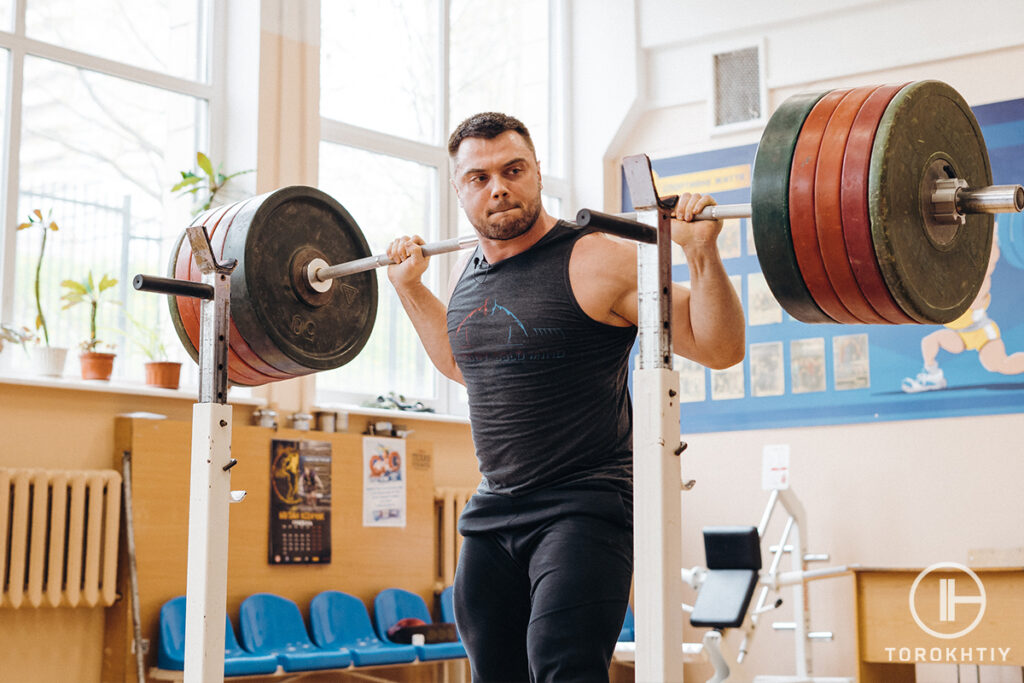
❌ Not Being Consistent
One of the biggest mistakes you can make is not being consistent. Progress in strength training relies heavily on regular, structured training over time. When people are inconsistent (meaning, they skip sessions or change programs all the time), they disrupt their ability to build the necessary adaptations in strength, technique, and endurance.
Squatting requires repeated exposure to the movement, with consistent loading and progression, to see improvements. Inconsistent training leads to stalled progress, plateaus, and often, frustration. Without consistency, even the best-designed squat program won’t deliver results.
❌ Not Balancing Frequency and Volume
Frequency does play a role in strength and muscle mass gains, but these effects are primarily driven by total training volume and intensity. When volume is equated, research shows that frequency alone doesn’t significantly affect strength gains. This means that just increasing the number of squat sessions won’t automatically lead to better results unless you also manage volume and intensity.
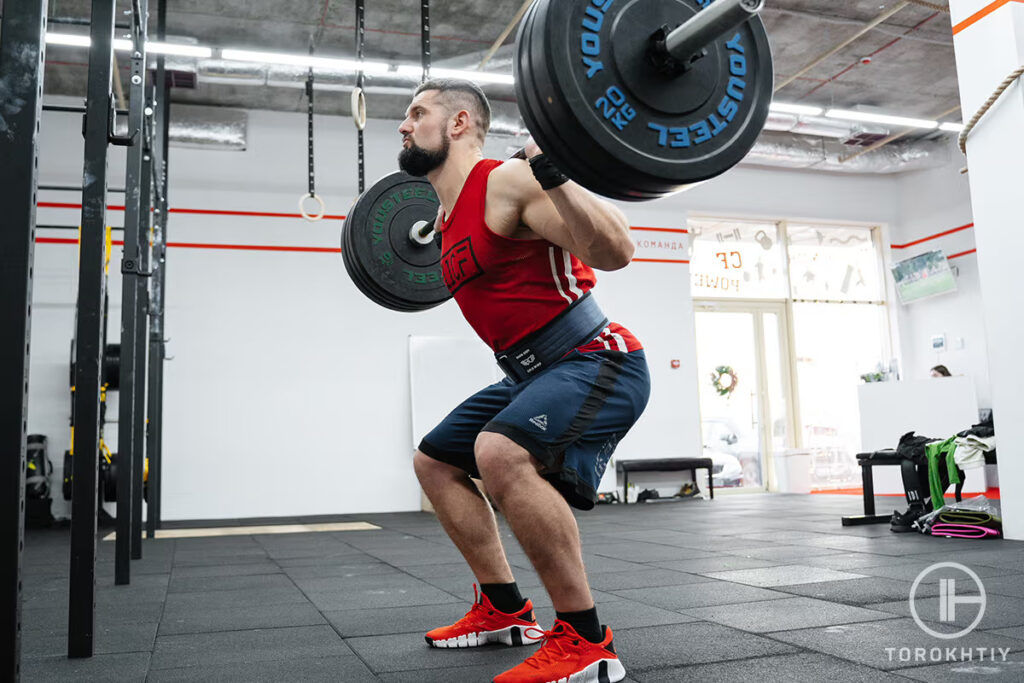
For advanced athletes, this balance is even more important. Although more frequent sessions can provide more opportunity to work on strength and technique (especially with beginners), they must be carefully managed to avoid overtraining and injuries.
❌ Forgetting About Recovery
It is easy to overlook the physical stresses and obligations that lifters face. Many athletes are already overworked and depleted from skill practice, conditioning speed training, power and strength training, and the demands of school or daily life.
Even the elite athletes frequently struggle with this problem since coaches and trainers constantly pressure them to work at higher volumes and intensities.
When it comes to enhancing performance, getting enough rest and recovery and understanding when to reduce the intensity are essential aspects that are frequently identified as qualities of outstanding coaches.
This includes enough down time, proper nutrition, and managing stress. Athletes can also benefit from autoregulation, which is a strategy where intensity and volume are adjusted based on how the athlete feels on a given day. Monitoring factors like fatigue, sleep quality, and overall well-being allows for smarter training decisions and makes sure that lifters continue to progress without burning out.
❌ Neglecting Mobility Training
Mobility in the hips, ankles, and spine is key for getting proper squat depth and alignment. Without it, the lifters risk poor form and potential injuries.
Nobody should skip mobility work because it can help make sure that the joints move through their full range of motion, reduce the risk of imbalances, and improve performance. Targeted mobility exercises can improve squat mechanics and allow lifters to get deeper, more stable squats. It will also reduce the risk of injuries and improve the ability to generate force in the correct positions.
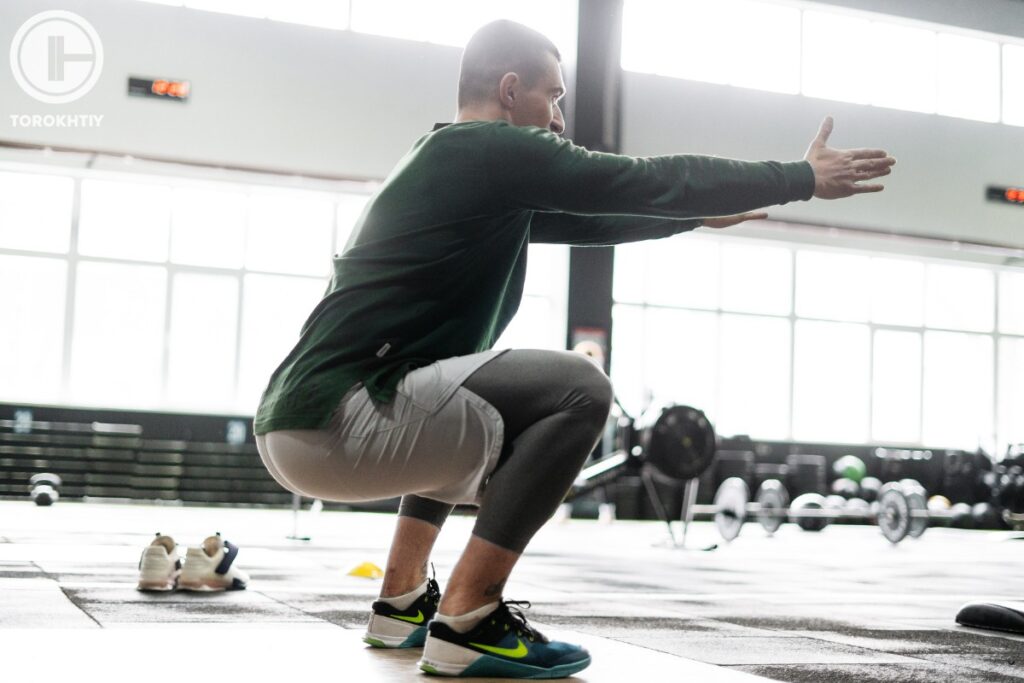
Conclusion
So, there you have it – a deep dive into some of the best squat programs out there. Everyone can find something for themselves, regardless of their fitness level. And hey – if the first one you choose doesn’t work, try and try again. You’re bound to find something you’ll love.
Have you tried any of these programs already? If you have, do you have a favorite? if you haven’t – what do you do to improve your squat game?
Leave your thoughts and/or questions below and we’ll get back to you!
References:
- Daniel Plotkin, Max Coleman, Derrick Van Every, Jaime Maldonado, Douglas Oberlin, Michael Israetel, Jared Feather, Andrew Alto, Andrew D. Vigotsky, Brad J. Schoenfeld, “Progressive Overload Without Progressing Load? The Effects of Load or Repetition Progression on Muscular Adaptations,” PeerJ 10 (2022): e14142.
- Jozo Grgic, Brad J. Schoenfeld, Timothy B. Davies, Bruno Lazinica, James W. Krieger, and Zeljko Pedisic, “Effect of Resistance Training Frequency on Gains in Muscular Strength: A Systematic Review and Meta-Analysis,” Sports Medicine 48, no. 6 (2018): 1207-1220.
- “Muscle Activation and Strength Training,” Kinetic Select (June 2017), excerpt from Strength Training, Second Edition, published by Human Kinetics.
- Stian Larsen, Eirik Kristiansen, and Roland van den Tillaar, “Effects of Subjective and Objective Autoregulation Methods for Intensity and Volume on Enhancing Maximal Strength During Resistance-Training Interventions: A Systematic Review,” PeerJ 9 (2021): e10663.
- Wei Wei, JingX Zhu, Shuang Ren, Yih-Kuen Jan, WuL Zhang, Ronghai Su, and Li He, “Effects of Progressive Body-Weight Versus Barbell Back Squat Training on Strength, Hypertrophy and Body Fat Among Sedentary Young Women,” Scientific Reports 13, no. 13505 (2023).
- Photos by Torokhtiy Media Team.
Why Trust Us?
With over 20 years in Olympic weightlifting, strength training, nutrition coaching, and general fitness our team does its best to provide the audience with ultimate support and meet the needs and requirements of advanced athletes and professional lifters, as well as people who strive to open new opportunities and develop their physical capabilities with us.
By trusting the recommendations of our certified experts in coaching, nutrition, and sports training programming, as well as scientific consultants, and physiotherapists, we provide you with thorough, well-considered, and scientifically proven content. All the information given in the articles concerning workout programming, separate exercises, and athletic performance, in general, is based on verified data.
The product testing process is described in more detail here.
Author: Sergii Putsov
Head of Sport Science, PhD
Best Results: Snatch – 165 kg,
C&J – 200 kg
Sergii Putsov, Ph.D., is a former professional weightlifter and National team member, achieving multiple medals in the 94 kg weight category at national competitions. With a Master’s degree in “Olympic & Professional Sport Training” and a Sport Science Ph.D. from the International Olympic Academy, Greece, Sergii now leads as the Head of Sport Science. He specializes in designing training programs, writing insightful blog articles, providing live commentary at international weightlifting events, and conducting educational seminars worldwide alongside Olympic weightlifting expert Oleksiy Torokhtiy.
Reviewed by: Oleksiy Torokhtiy
Olympic Weightlifting Champion, PhD in Sport Science
Best Results: Snatch – 200 kg,
C&J – 240 kg
Oleksiy Torokhtiy is a professional athlete boasting 20 years of experience in Olympic weightlifting. With multiple European and World titles under his belt, he has showcased his prowess in two Olympic Games (Beijing 2008 and London 2012). Upon concluding his illustrious career, Oleksiy dedicated himself to coaching. By 2022, he had conducted over 200 weightlifting seminars worldwide. He is the visionary behind an international sportswear and accessories brand known for its motto, “Warm Body Cold Mind.” Additionally, he is an esteemed author and the creator of a series of training programs and eBooks.




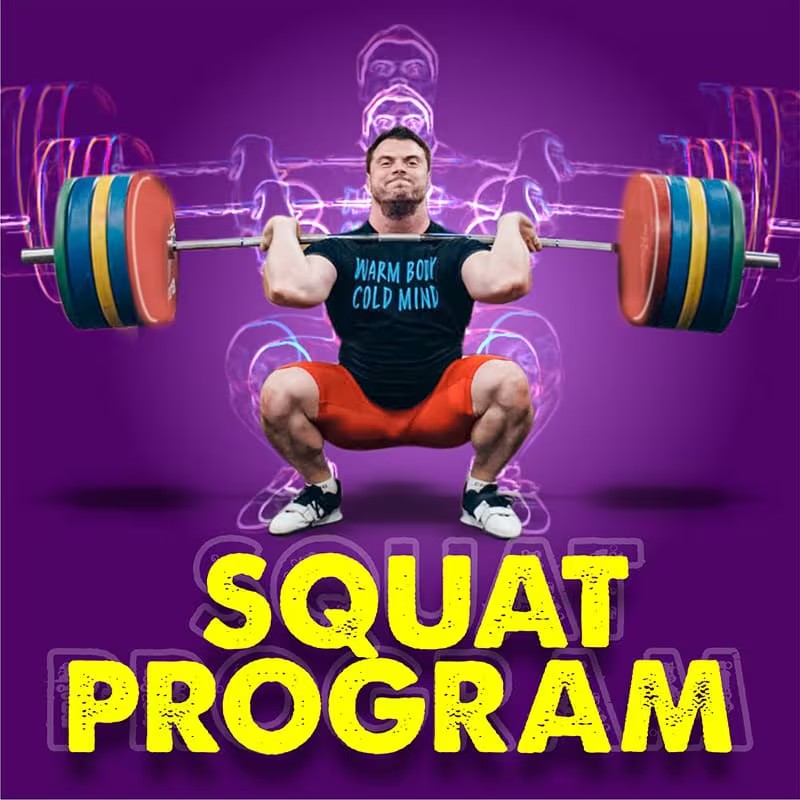
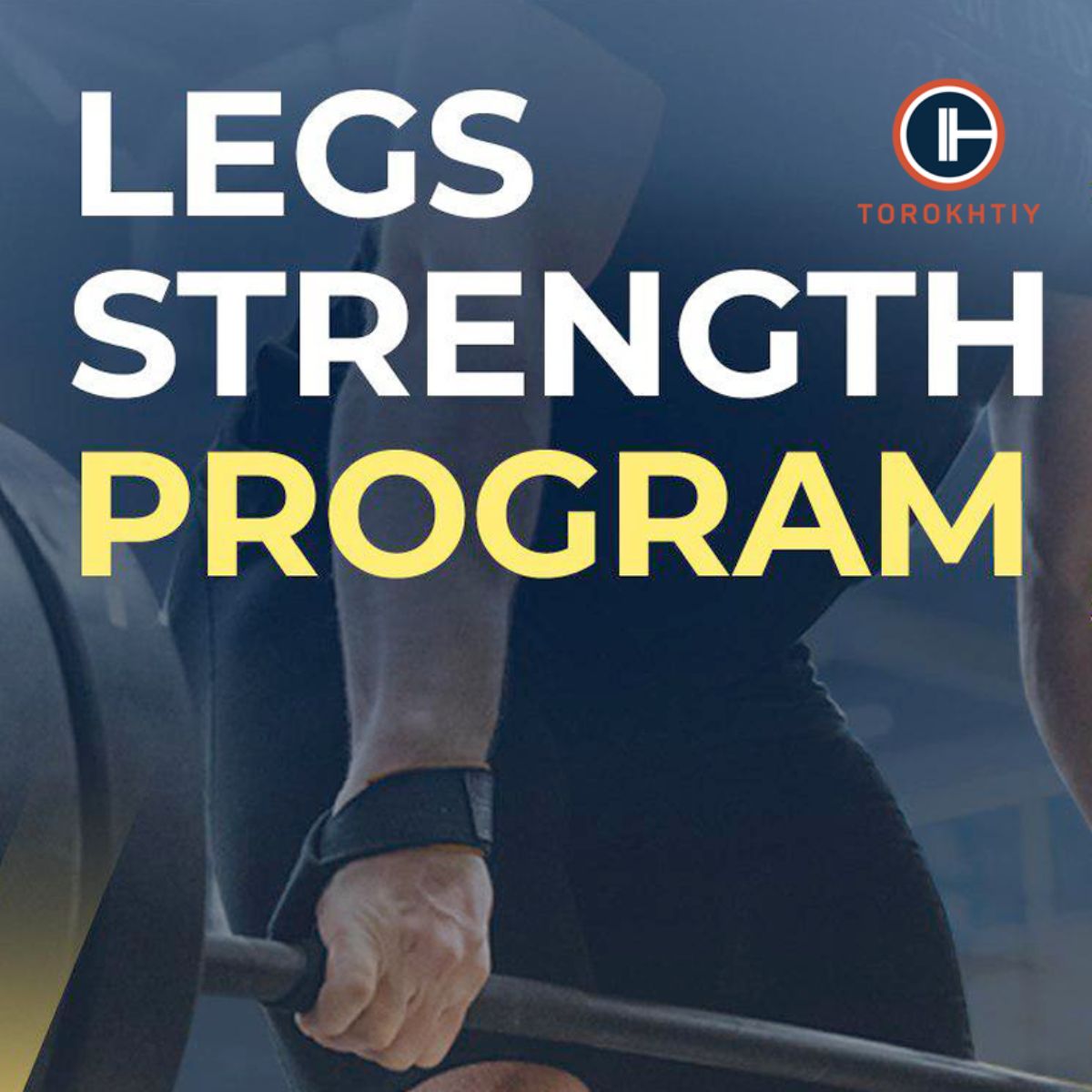
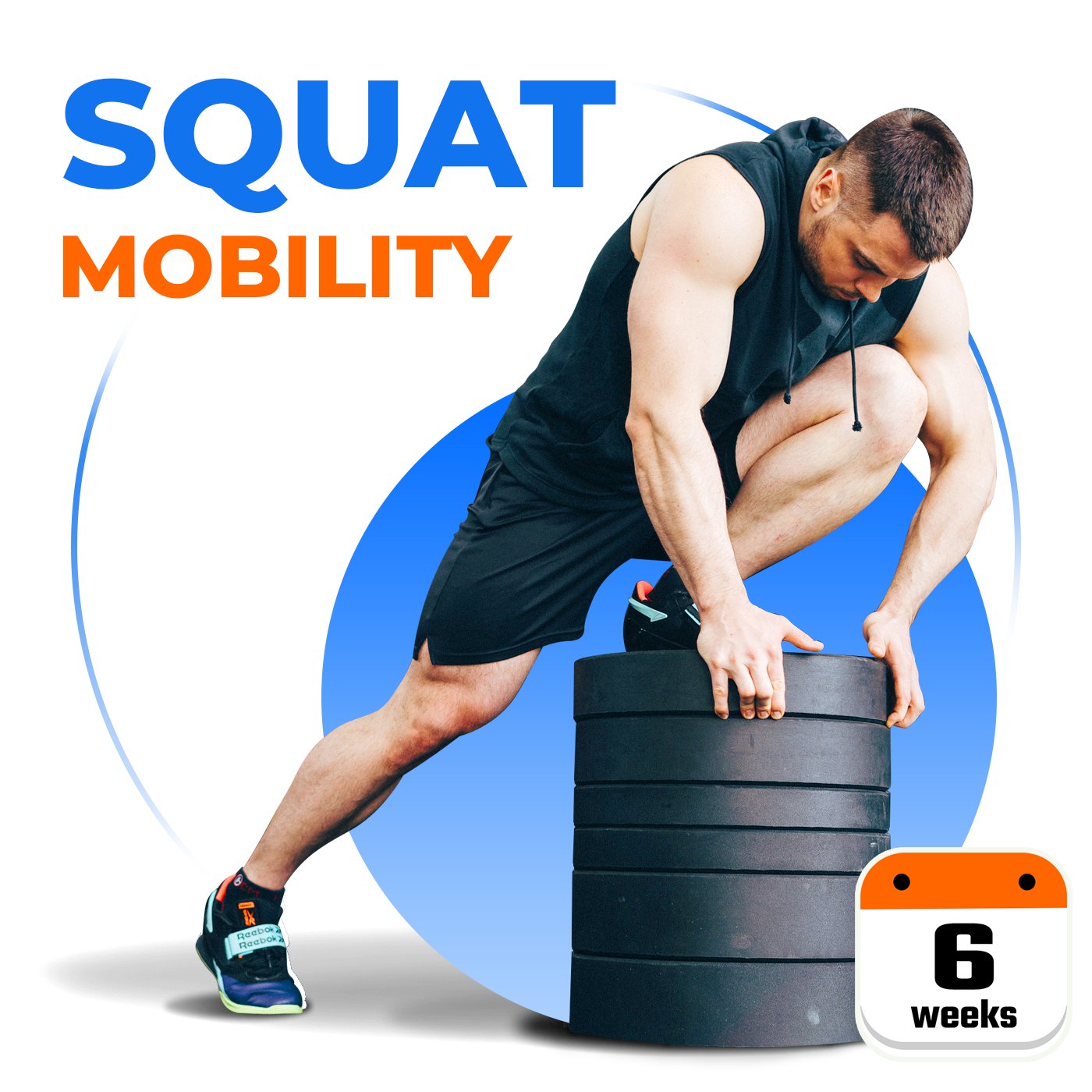
Still have questions after reading our article? Unlock your full potential by engaging with our experts and community! Don’t hesitate — leave a comment below and Sergii Putsov will provide a personalized answer and insights to help you reach your goals.